What is lagurus and how to grow it?
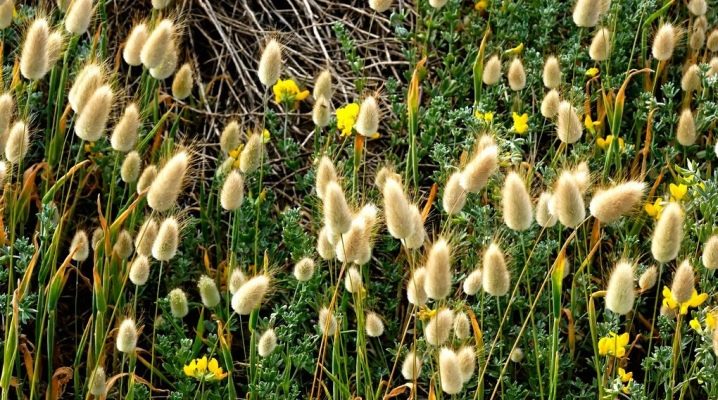
Lagurus, or haresekhvot, is a small cereal plant that is in demand among gardeners and landscape designers. The lagurus got its name for its resemblance to hare tails. It is worth considering in more detail the features of the plant and the methods of growing it.
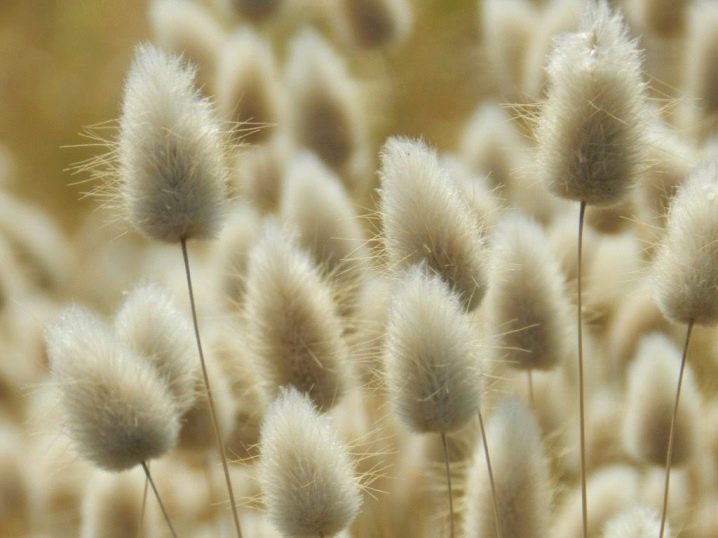
Description of the plant
The homeland of the lagurus is the Mediterranean coast. Basically, the culture is found in regions where there is rocky, sandy or dry soil, since the plant does not like high humidity. The peak flowering of the grass occurs in the season from July to August. Among the main characteristics:
- stem type - straight;
- length - from 25 to 60 cm;
- the color of the edge of the spikelets is from light to light green or gray-white;
- leaf plates are lanceolate, silvery-yellow in color.
The plant is an annual, however, in some cases, the probability of the existence of the grass for 2 years is high.
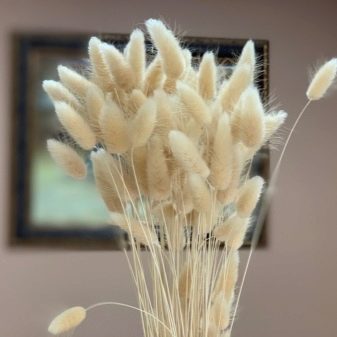
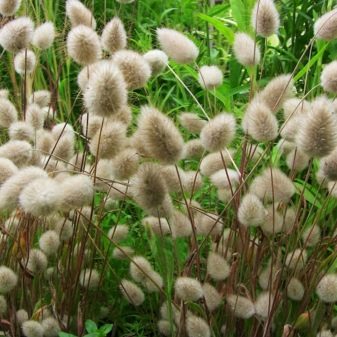
Varieties
Haretail is a one-of-a-kind species, but breeders have eventually developed several varieties that are now popular in many regions. It is worth considering the characteristics of the most popular.
Ovoid
The most famous variety grown in many regions of the country. The annual cereal plant gets its name due to the unique structure of the panicles, which look like an egg. The herbal culture is ideal for planting in cereal curbs and on slides, therefore it is often used by landscape designers to create original compositions.
Also, the inflorescences of the ovate haretail are suitable for creating dry winter bouquets that can stand for many years and not lose their attractiveness.

To properly dry the flowers, they must be cut immediately after blooming, as long as they have a pleasant creamy white color.
Heavenly
A rare and unique variety of small size, which is also used by designers to decorate alpine slides. Grown mainly in warm and humid regions, it is distinguished by flowers of a heavenly hue, which emit a weightless and unobtrusive aroma.

Gypsophila
It is also called a studio plant because it produces excellent dried flowers for perennial bouquets or decorations. The grass grows mainly in dry and stony soils in areas with a mild climate. Gypsophila flowers are distinguished by a delicate creamy shade.

Lesya
A shrub variety, the peculiarity of which is a large number of stems, each containing a compact rosette made of deep green leaf plates. Among other characteristics of Lesya:
- the edge is soft;
- life expectancy - a year;
- the height of the stems is 60 cm.
Under natural conditions, the variety is found in many regions of Europe. Lesya begins to bloom mainly in May, when warm weather sets in. The duration of flowering does not exceed 3 months, during which the plant forms spikelets of a pink hue and up to 4 cm long. The shape of the spikelets is round, and the width of the inflorescences does not exceed 2 cm. At the end of flowering, the hare tail forms achenes for the subsequent cultivation of bushes.
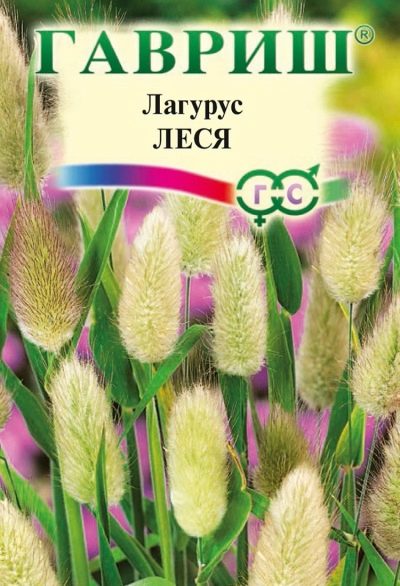
Where does it grow in nature?
Haretail is quite common and is found in almost all countries. Most of the varieties grow in the latitudes of North America, but a wide variety of lagurus can also be found in the lands of Asia and the Caucasus.
In Russia, lagurus is an ornamental plant that is mainly used to decorate gardens, parks and other walking areas, as well as recreation areas.
Among the advantages of the culture, they distinguish resistance to low temperatures, which makes it possible to grow it even in the Urals or Siberia.
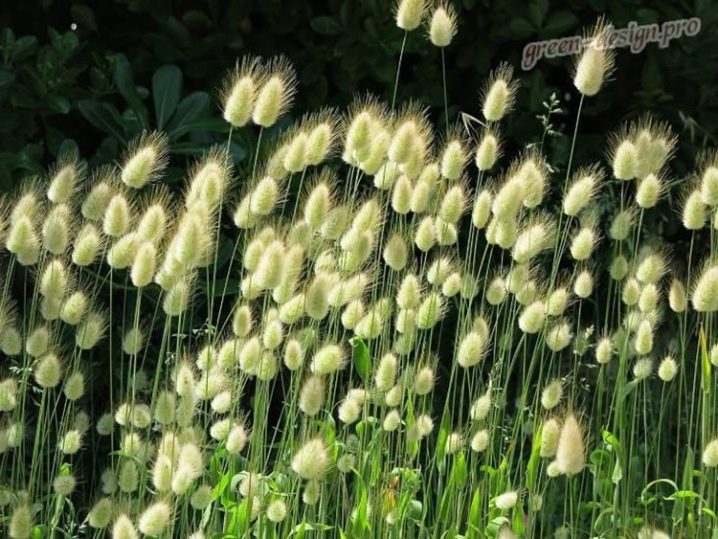
Planting and leaving
Lagurus is grown both as seeds and seedlings. Each method has its own characteristics. Among the nuances of the seedling technique, the need to prepare special flat-shaped containers is distinguished. It is better to carry out work in April or closer to the beginning of May, in order to have time to grow seedlings of the required height for transplanting into the ground or a pot. It is important to complete all the necessary steps.
- First, containers are prepared by pouring fertile soil into them and providing a drainage layer.
- In each container, a small hole is made in advance to prevent the accumulation of moisture in the ground.
- Next, 3-5 seeds are planted in the pot, keeping a distance of 4 cm between them.The maximum planting depth should be 0.5 cm.
After that, the seedlings are covered with a layer of soil, the containers are wrapped in polyethylene and placed in a warm and sunny place for germination.
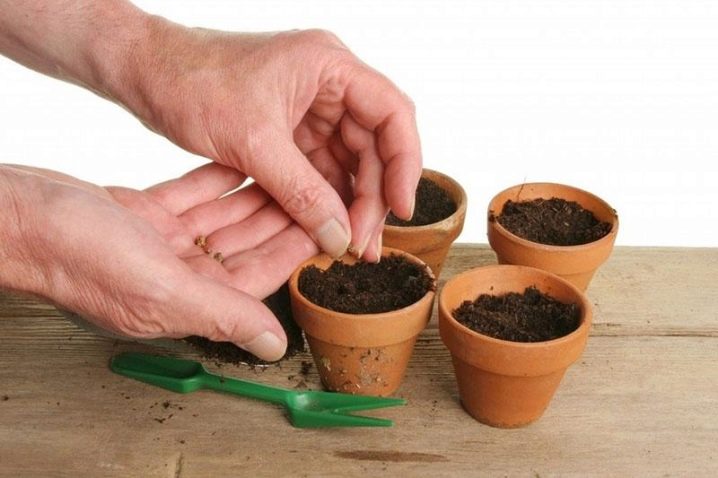
The second option is sowing seeds in the spring. Usually lagurus is planted with seeds towards the end of April. The disadvantage of this option is the low percentage of germination of the material, but the method is simpler and faster. Before planting, you will need to prepare seeds and soil. The first involves the following steps:
- Selection. Preference is given to whole and large samples.
- Disinfection. The seeds are kept in a special solution to strengthen the immune system for 10 minutes.
- Treatment. Additionally, the seed is treated with growth stimulants to increase the percentage of germination and survival in the soil.
Site preparation for planting includes loosening the soil followed by the introduction of organic fertilizers.
In regions with warm winters, planting of lagurus is carried out in frosts, if there is a likelihood of the seeds taking root in the ground. After planting the material, it must be thoroughly covered with soil and covered with a layer of spruce branches or dry foliage.
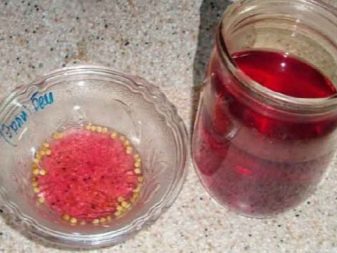
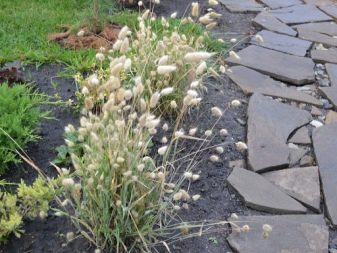
Caring for the plant is not particularly required, since the haretail is considered an unpretentious crop that can grow without help in almost any conditions. Lagurus quickly takes root in both neutral and acidic soil, does not require regular watering and fertilizing, for which it is appreciated by both gardeners and landscape designers. But it is worth following the basic care guidelines.
- Illumination. It is better to grow lagurus in a lighted area. This solution will preserve the green tint of the leaves and stems, as well as extend the flowering period. However, when choosing a site, it is recommended to avoid a place where direct sunlight falls. Otherwise, the chances are high that the sun will burn the leaves of the lagurus.
- Temperature. Haretail, regardless of the variety and degree of resistance to external influences, prefers heat and does not tolerate strong fluctuations in temperature. It is recommended to grow the crop at a temperature of 18 to 27 degrees Celsius.
- Humidity. The optimal rate is 50% or more. It is possible to grow a culture both in the open field and on the balcony, where it will be possible to provide the necessary conditions for active growth.
- Watering. The plant easily tolerates drought, but gardeners are still advised to monitor the degree of moisture in the soil in which the haretail grows. The plant should be actively and regularly watered during periods of extreme heat, performing the procedure in the morning or evening every day. For watering, it is better to use settled warm water. It is also worth providing a drainage layer that will prevent stagnation of liquid and rotting of the culture.
- Top dressing. Lagurus as an annual herb is enough for the growth, flowering and seed formation of the amount of nutrients that are already in the soil.However, it will be useful to use organic fertilizers when growing crops in rocky or infertile soil.
- Transfer. An annual plant does quite well in one place throughout the season. However, if you need a transplant, you should carefully prepare for the procedure. Preference should be given to drained or well-moistened soil when choosing a soil for transplanting a crop.
Lagurus is often cut to create attractive dried flower arrangements. It is recommended to carry out the procedure during the flowering of the grass - in the last days of July or early August.
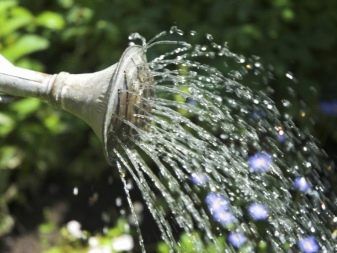
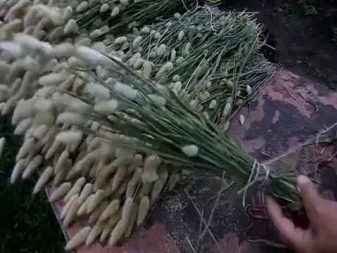
Reproduction methods
Lagurus is propagated mainly by seeds. In this case, the sowing of the material is carried out at different times of the year, depending on the conditions for its cultivation. Additionally, it should be noted that the germination rate of such seedlings is lower compared to planting seeds for seedlings. Therefore, in cooler regions, preference is given to the second option.
Seeds for planting lagurus can be bought at a gardening store or collected from spikelets that have had time to bloom.
However, when collecting seed, it is worth taking into account agrotechnical recommendations and additionally treating the seeds in order to prevent cracking and improve survival in the soil for seedlings or open ground.
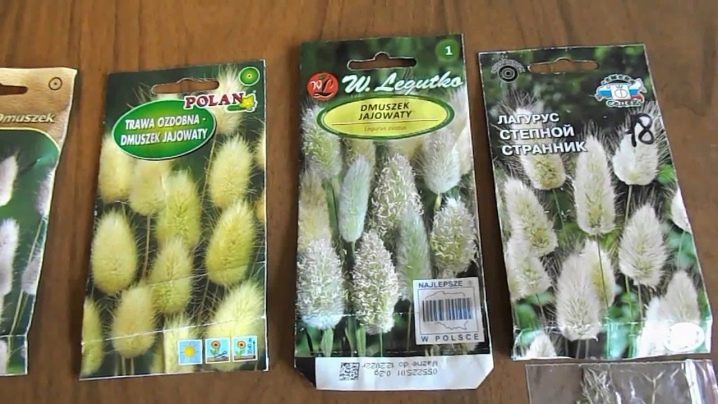
To get several individuals of the culture at once, it is better to grow lagurus with seedlings. To do this, you will need to perform certain actions.
- Prepare small flat containers in April or early May.
- Purchase or dig up high-quality loose soil, which contains a large number of nutrients.
- Provide a drainage layer so that moisture does not stagnate in the pot.
- Make small holes up to 1-2 cm deep.
- Plant the seeds, retreating between the holes 3-4 cm. Place 2-3 seeds in one hole in order to increase the percentage of germination.
To get quick shoots, it is recommended to sprinkle the seeds at the end and cover the containers with a thin film or glass to form a small greenhouse at home. As the seedlings grow, the film must be periodically removed and the bushes ventilated.

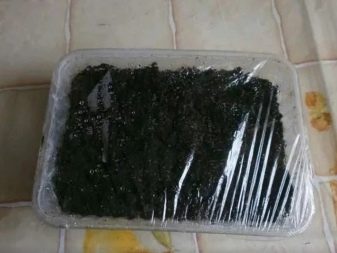
After the seedlings get stronger, you can get rid of the greenhouse, and the pots will need to be rearranged in a warm place, where enough sunlight penetrates to germinate the culture.
Before planting lagurus in open ground, a hardening procedure should be carried out. To do this, pots with seedlings are put outside for a short period of time, and then transferred back to the house, allowing the grass to acclimatize and get used to the harsh conditions. After 2-3 weeks, when the weather is warm outside, the seedlings are transplanted and the hare tail is grown.
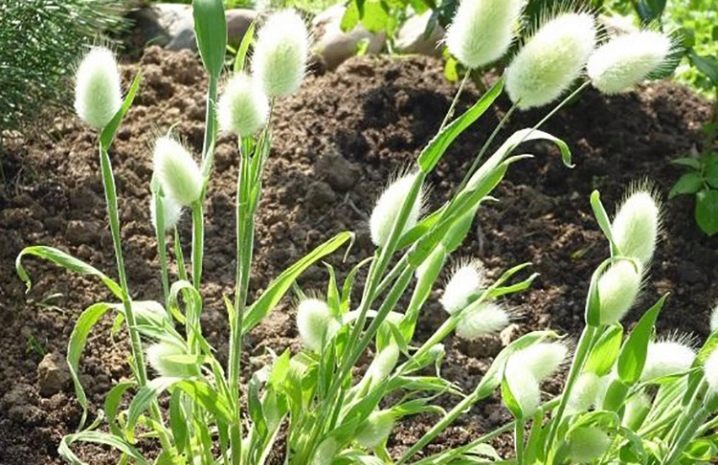
Use in landscape design
Lagurus is a plant in demand in landscape design, which is used for the device:
- alpine slides;
- mixed flower beds;
- mixborders;
- flower beds.
Also, a perennial is suitable for single plantings at home due to its original appearance and resistance to most external factors. In principle, planting such a culture is an original technique that will make any composition unique and fresh.
With the help of lagurus spikelets, it is possible to shade too bright chrysanthemums, asters and other flowers. Therefore, fluffy grass is often used to balance the flower arrangement.
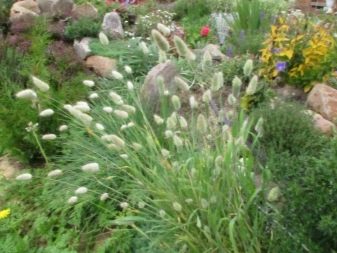
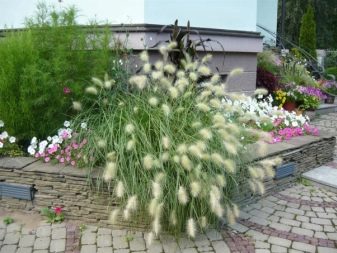
An additional plus of using lagurus in the landscape is the plant's unpretentiousness to care and long-term preservation. The best solution is to plant the grass in a mass of plants with similar properties to create an attractive composition that requires minimal maintenance. In addition, such combinations will make it possible to decorate areas even in those places where the soil cannot boast of a large supply of nutrients.
Another option for using lagurus is planting next to grassy crops, the foliage of which has a dark green tint. As a result, it will be possible to create a contrasting and at the same time bright composition.
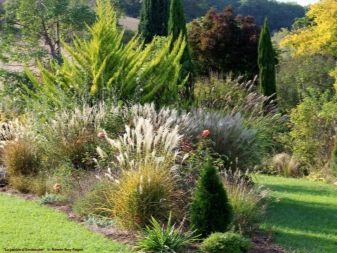














The comment was sent successfully.